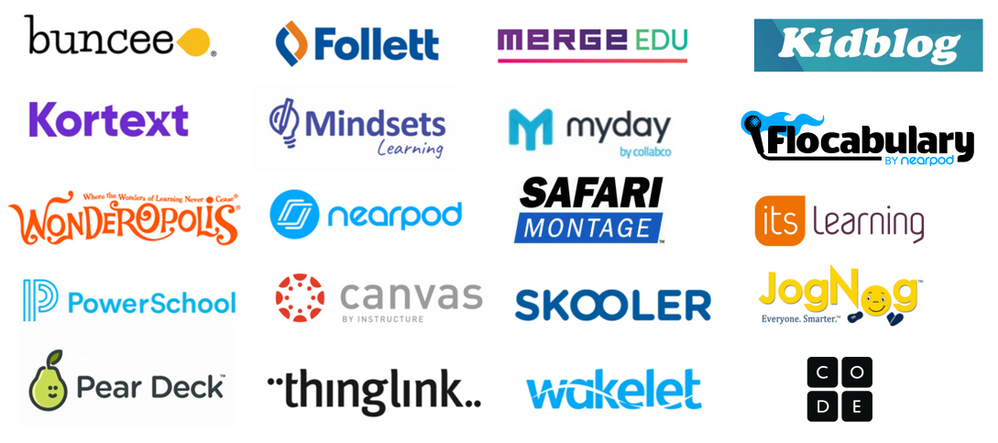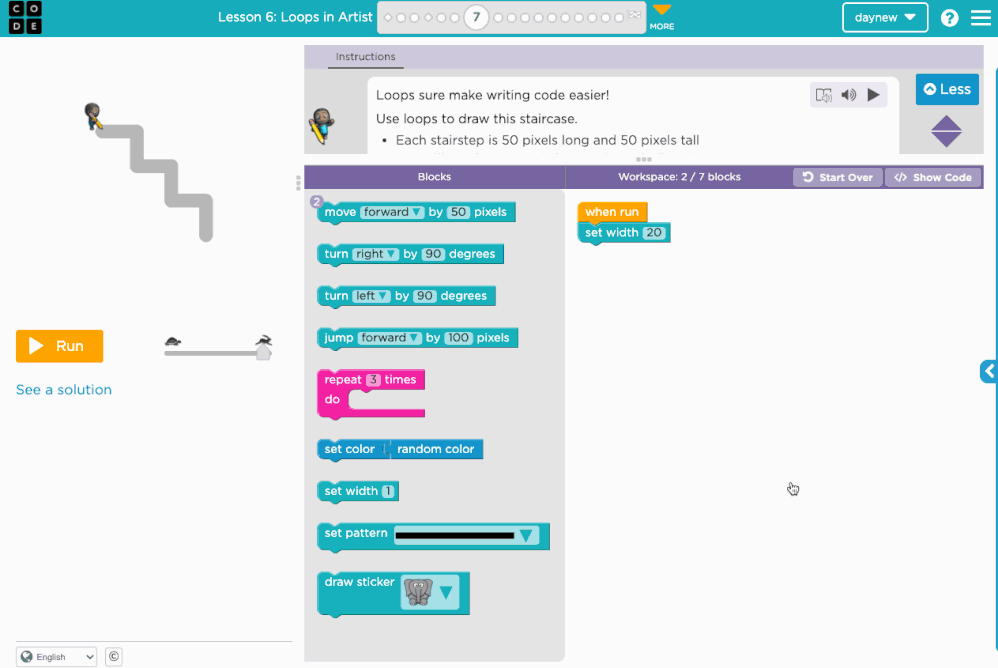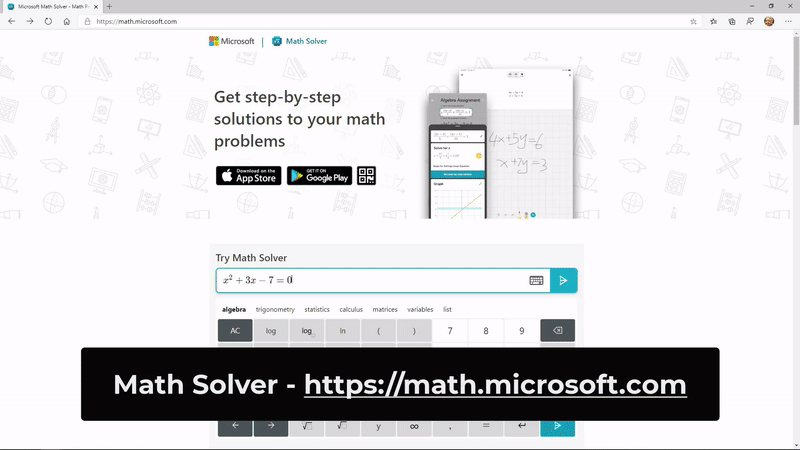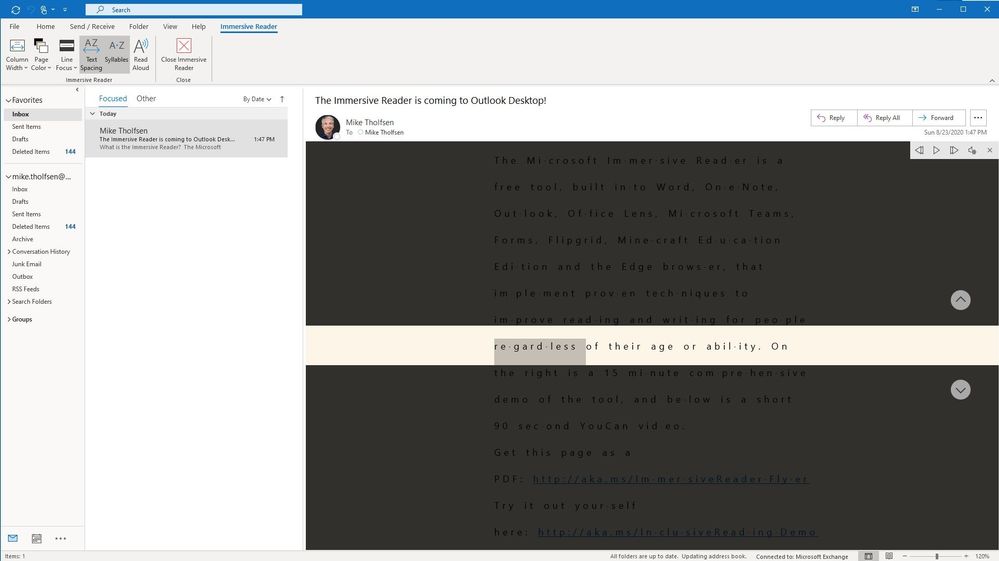by Scott Muniz | Aug 25, 2020 | Azure, Microsoft, Technology, Uncategorized
This article is contributed. See the original author and article here.
Online learning has grown rapidly over the last couple of months as schools and organizations adapt to new ways of connecting and methods of education. Speech technology can play a significant role in making distance learning more engaging and accessible to students of all backgrounds. With Azure Cognitive Services, developers can quickly add speech capabilities to applications, bringing online learning to life.
Developing interactive courses with Text to Speech
One way that Speech technology can support better online learning experiences is through Text to Speech, a Speech service feature that converts text to lifelike speech. Educators can create interactive materials with highly expressive and humanlike voices using Neural Text to Speech (Neural TTS), now available in 36 voices with 31 languages. (Learn about our most recent languages here.)
With Neural TTS, developers can add natural-sounding voice to learning materials, for scenarios like slide narration. Neural TTS can also be used for reading aloud any content, facilitating new ways for students to interact with material as well as increasing accessibility for students with learning differences. Educational organizations can also use Neural TTS to create AI-powered virtual “teachers” that interact with students to make online courses more engaging.
With the Custom Neural Voice capability, online learning solution providers can further create interactive learning experiences for their students in a voice that represents their brand, or develop unique voices for different characters. For example, Tomorrow Advancing Life (TAL) Education Group is building different AI teachers’ voices for their online courses. Duolingo, one of the world’s most popular language learning apps, is creating unique voices for different characters used in the lessons.
Using SSML or the Audio Content Creation tool, users can further finetune audio characteristics like voice style, rate, pitch, and pronunciation to fit their scenarios—no code required. Text to Speech also supports different speaking styles—like cheerfulness and empathy—making it easier to bring audiobooks to life.
To learn more about Audio Content Creation, watch the video tutorial.
Get started today
To learn more and get started adding speech to your educational applications, check out our resources below:
Text to Speech
Tags:
by Scott Muniz | Aug 25, 2020 | Azure, Microsoft, Technology, Uncategorized
This article is contributed. See the original author and article here.
Have you ever wondered why Az.Compute has a different version than the Az module or why a module had documentation but is not available in Cloud Shell?
The following describes our versioning principles, upgrade policies, and preview process for the PowerShell modules for Azure.
Versioning
We follow the semantic versioning principles (https://semver.org/) for all the Azure modules. Essentially this means:
- Major version change for releases with breaking changes.
- Minor version change for functionality with backward compatibility.
- Patch version change for bug fixes or improvements with backward compatibility.
We apply this policy for each module that we own. For example, Az.Storage had one version upgrade that had a breaking change since the initial version and is currently in version 2.4.0. Az.Network had two major upgrades and is now in version 3.3.0.
The Az wrapper module’s goal is to facilitate the acquisition of the different Azure modules. It comprises several modules with different versions like Az.Storage and Az.Network from the previous example.
From the semver rule definition, if a major version upgrade happens for an underlying module, Az will undergo a major version upgrade as well.
Breaking changes
A breaking change is a change in a PowerShell module that can break a script written with a previous version.
The breaking changes fall into two main categories:
- Changes in the modules: cmdlet or parameter deprecated, parameter name change, change from optional to required, returned type change.
- Changes in the default behaviors. For example, soft delete turned on by default for Azure KeyVault.
Upgrading to a new major version of Az will require script validation with this version and implement the necessary changes.
To allow customers to plan for this, we have two policies in place:
Breaking change releases are identified with “Major Release” in the title and have an exclamation mark in the description on GitHub: https://github.com/Azure/azure-powershell/milestones.
Preview
We have two types of preview modules:
- Modules with a 0.X.X version: new modules potentially calling Azure APIs that are not stable. Hence breaking changes may happen at any time, and issues can occur. Modules will remain at least six weeks in preview to allow customer feedback before considering moving the modules to GA.
Preview modules can be found in the reference documentation (https://docs.microsoft.com/powershell/module/) but are not included in the Az wrapper module nor are available in Cloud Shell by default until they can move to a stable version.
- Modules with X.Y.Z-preview version: expose new features of the associated service that may not be stable yet or introduce breaking changes waiting for the next major release.
We publish the reference documentation for all modules including those with a version 0.x.x. However, only the stable modules are present in Cloud Shell. If you want to use a preview module, you must install the specific module individually.
Over the last few months, you told us that it was difficult to find and install modules in preview and I’m pleased to announce that we are working on a solution that will improve the discovery and management of preview modules along with those that are stable. We will be announcing more about this very soon.
Should you be interested in having a preview module move to GA, please help us prioritize by commenting on existing issues listed here: https://github.com/Azure/azure-powershell/issues/12755
As always, any feedbacks and issues are always welcome https://github.com/Azure/azure-powershell/issues/new/choose
The Azure PowerShell team

by Scott Muniz | Aug 25, 2020 | Azure, Microsoft, Technology, Uncategorized
This article is contributed. See the original author and article here.
General Availability of Immersive Reader as an Azure Cognitive Services
Just a few years ago, the Immersive Reader was a bold idea in a Microsoft Hackathon focused on using the latest science and research around reading while using inclusive design principles to empower students of all abilities. Today, more than 23 million people every month are using it, improving their reading and writing comprehension and even their ability to do math problems.
Today, we’re thrilled to announce this powerful literacy tool has reached General Availability as an Azure Cognitive Service, allowing third party apps and partners to add Immersive Reader right into their products. During the public preview period, we’ve had scores of partners integrate the Immersive Reader, and some of them are listed below. The Immersive Reader helps people of all abilities, including dyslexia, ADHD, emerging readers, non-native speakers, people with visual impairments. If there’s an app you love to use in your classroom and you would love to see an Immersive Reader icon show up there soon, let them know. You can also head over to the Azure blog and learn more about this new Cognitive Service.

Get Started Today
To begin exploring how to integration the Immersive Reader into your app or service, here are some helpful getting start links:
We look forward to hearing your feedback, and partners enabling the Immersive Reader to help even more people with reading.
New Partners Integrate Immersive Reader
With today’s announcement of Immersive Reader moving to General Availability, we are excited to announce new partners who are integrating this inclusive tool.
Code.org helps make computer science more inclusive
Code.org is a nonprofit dedicated to expanding access to computer science in schools and increasing participation by women and underrepresented youth. Their vision is that every student in every school has the opportunity to learn computer science, just like biology, chemistry or algebra. To help ensure Code.org can reach every student, they have begun to integrate the Immersive Reader into their platform, and this fall will be rolling this integration out. An example of one way this integration will surface is below.
“We’re thrilled to partner with Microsoft to bring Immersive Reader to the Code.org community,” said Hadi Partovi, founder and CEO of Code.org. “The inclusive capabilities of Immersive Reader to improve reading fluency and comprehension in learners of varied backgrounds, abilities and learning styles directly aligns with our mission to ensure every student in every school has the opportunity to learn computer science.”

SAFARI Montage
SAFARI Montage is the leading K-12 Learning Object Repository, Video Streaming Library, IPTV & Live Media Streaming provider. The system provides an interoperable foundation for a Digital Learning Ecosystem where teachers and students can access procured, created and curated educational digital resources, create playlists and integrate items into their LMS. The inclusion of Immersive Reader from Microsoft inside the SAFARI Montage Learning Object Repository (LOR) enhances the equitable access of SAFARI Montage resources for all learners. It provides ideal support for remote learning as instructions to students written in English will be accessible to virtually any learner, in any language or with any reading ability.
“Immersive Reader is a crucial support for CPS students and families. During remote learning, particularly for our younger learners, student learning is often supported by parents, guardians, or other caregivers. Since Microsoft Immersive Reader can be used to translate the student facing instructions in our digital curriculum, families can support student learning in over 80 languages, making digital learning far more equitable and accessible than ever before! In addition, read-aloud and readability supports are game changers for diverse learners”
– Giovanni Benincasa, UX Manager, Department of Curriculum, Instruction, and Digital Learning, Chicago Public Schools
The embedded video below shows how Immersive Reader helps SAFARI Montage students and educators.
SchoolBox integrates Immersive Reader
The LMS from Schoolbox is a highly customizable learning management system that accommodates a range of modern teaching strategies. Its components support learner interaction, creativity, a growth mindset, student wellbeing, and expands learning beyond the classroom to suit all K–12 learners. Share resources, individualized learning, increase collegiality. To help ensure content is fully accessible and inclusive, SchoolBox has integrated the Immersive Reader. You can see an example in this video.
Immersive Reader is coming to more Microsoft apps!
Microsoft Math Solver and the Immersive Reader make math more inclusive
The Microsoft Math solver web site and IOS and Android apps all help students solve math problems independently. Especially during remote learning, this has been a helpful app for students and families. To ensure all students can access the content in the step-by-step solution aspects of the Math Solver, we are adding the Immersive Reader, including all the capabilities to read math out loud, including more complex equations. You can also translate, use line focus, and all of the other Immersive Reader features.

This has already rolled out to the web version of Math Solver (example GIF below) and is coming to the iOS and Android mobile apps at the end of August.
Immersive Reader coming to Outlook Desktop and the Mail app on Windows 10
Last year we added Read Aloud to Outlook Desktop, and as a result heard from many people around the world about the positive impact this gave to those reading email. Later this fall, in Outlook Desktop we will be rolling out many of the same Immersive Reader capabilities that Word Desktop currently has. An example of how this will look is below.
In addition, we will be bringing this same set of Immersive Reader features to the Mail client on Windows 10 in the 4th quarter of 2020

Microsoft Forms Mobile and Consumer
We launched Immersive Reader in Forms for our Education customers in fall of 2019. This fall we are rolling out Immersive Reader for our consumer Forms customers who use Outlook.com. There will be a switch to enable Immersive Reader for customers who want this capability. In addition, customers using Forms on a mobile phone will also be able to enable the Immersive Reader.
Immersive Reader Enhancements
Immersive Reader SDK 1.1 updates
With today’s announcement of the General Availability of the Immersive Reader as an Azure Cognitive Service, we have also rolled out some top requests from partners to improve our software development kit (SDK). Version 1.1 adds support to have a page read aloud automatically, or to pass in a language parameter and pre-translate content. Developers can read more about our SDK updates here.
10,000+ new Picture Dictionary Images
The Picture Dictionary in the Immersive Reader has been one of our most well-loved capabilities. We’re expanding our partnership with Tobii Boardmaker and including many more images into our Picture Dictionary. For many languages, we will be adding over 10,000 new images, and we expect all current Picture Dictionary languages will get more images. These additional images will show up for Microsoft apps as well as any partner using our Immersive Reader Cognitive Service.
More Neural Text-to-Speech and translation languages
15 new Neural Text-to-Speech (TTS) voices.
We are always looking to broaden the languages and locales of Immersive Reader. Today we are excited to announce 15 new Neural TTS languages for the Immersive Reader. Neural Text-to-Speech is the “human sounding” read aloud voices that we’ve rolled out in a limited number of languages. We’ve added 15 more to Immersive Reader, including: Salma in Arabic (Egypt), Zariyah in Arabic (Saudi Arabia), Alba in Catalan (Spain), Christel in Danish (Denmark), Neerja in English (India), Noora in Finnish (Finland), Swara in Hindi (India), Colette in Dutch (Netherland), Zofia in Polish (Poland), Fernanda in Portuguese (Portugal), Dariya in Russian (Russia), Hillevi in Swedish (Sweden), Achara in Thai (Thailand), HiuGaai in Chinese (Cantonese, Traditional) and HsiaoYu in Chinese (Taiwanese Mandarin). Read the blog for the new list, and explore the full list of Neural TTS languages.
5 new Translate languages in Immersive Reader
Our friends on the Microsoft Translator team have been hard at work launching 5 new languages, and today the Immersive Reader is adding this under our “Translate” menu, for either by Word or entire Document. The new languages are: Gujaratim Marathi, Oriya, Kurdish (Northern), Kurdish (Central), Pashto & Dari.
And this is for folks who like lists!
- Immersive Reader for Azure Cognitive Services (General Availability) – available today
- Safari Montage and Immersive Reader – available today
- SchoolBox and Immersive Reader – available today
- Immersive Reader Cognitive Services SDK 1.1 updates – available today
- 10,000+ new Picture Dictionary Images – coming this fall
- Fifteen New Neural Text to Speech languages – available today
- Five new languages for translation in Immersive Reader- Gujaratim Marathi, Oriya, Kurdish (Northern), Kurdish (Central), Pashto and Dari – available today
- Microsoft Math Solver and Immersive Reader (Web) – available today
- Microsoft Math Solver and Immersive Reader (iOS) – late August
- Microsoft Math Solver and Immersive Reader (Android) – late August
- Forms Consumer and Forms Mobile Immersive Reader – late August
- Code.org and Immersive Reader – Fall, 2020
- Outlook Desktop and Immersive Reader – Fall, 2020
- Mail app on Windows 10 and Immersive Reader – 4th quarter, 2020
We hope you enjoy these new Immersive Reader updates! Don’t hesitate to reach out with any questions or comments.
Mike Tholfsen
Principal Product Manager
Microsoft Education
@mtholfsen
by Scott Muniz | Aug 25, 2020 | Azure, Microsoft, Technology, Uncategorized
This article is contributed. See the original author and article here.
I’m happy to introduce our Azure IoT Ask the Expert series to you.
Each month, from September onwards, our engineers and specialists will briefly introduce an IoT topic in the Learn IoT discussion section of this community and will open it up to you to ask any questions or thoughts relating to that topic you may have.
These Ask an Experts are intended to be longer lasting Q&As which are inclusive of anyone of you around the world, in all time zones and to create a legacy of questions and answers tailored to your needs. This is why we have chosen to add them as a conversation to the Learn IoT section of the IoT Tech Community opposed to host them as a short, live discussion.
Which topics can you expect?
|
Month
|
Topic
|
Expert(s)
|
Link to discussion
|
|
September
|
IoT and Security
|
Martin Tuip
|
TBA
|
|
October
|
Computer Vision
|
Paul DeCarlo
|
TBA
|
|
December
|
TBA
|
TBA
|
TBA
|
This table will be updated both with new discussion topics, ahead of time as well as links to past discussion topics.
September Ask the Expert Topic: IoT and Security
From the 2019 ‘IoT Signals Report’ we’ve learned that 30% of you feel that complexity and technical challenges are the biggest barrier to the adoption of IoT and to the digital transformation of your company. Security was called both to be one of the main drivers for the implementation of IoT as well as one of the biggest challenges. As security is so top of mind, this will be our first Q&A topic.
Get your questions ready
On the first working day of each month, a new Ask the Expert will be live in the Learn IoT conversation section of this website, plus we will update this blog post with a link. Your questions or ideas around the topic of the month can be added as comments to that specific conversation – the conversation will be monitored for a full month. We’re looking forward to seeing your questions and thoughts in the next upcoming Ask the Expert!
Find previous Ask the Expert Discussions here!
Ask the Expert: Windows 10 IoT Enterprise
Ask the Expert: Azure Sphere, Embedded Hardware, and IoT Security



Recent Comments